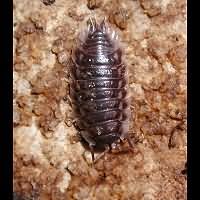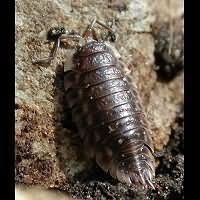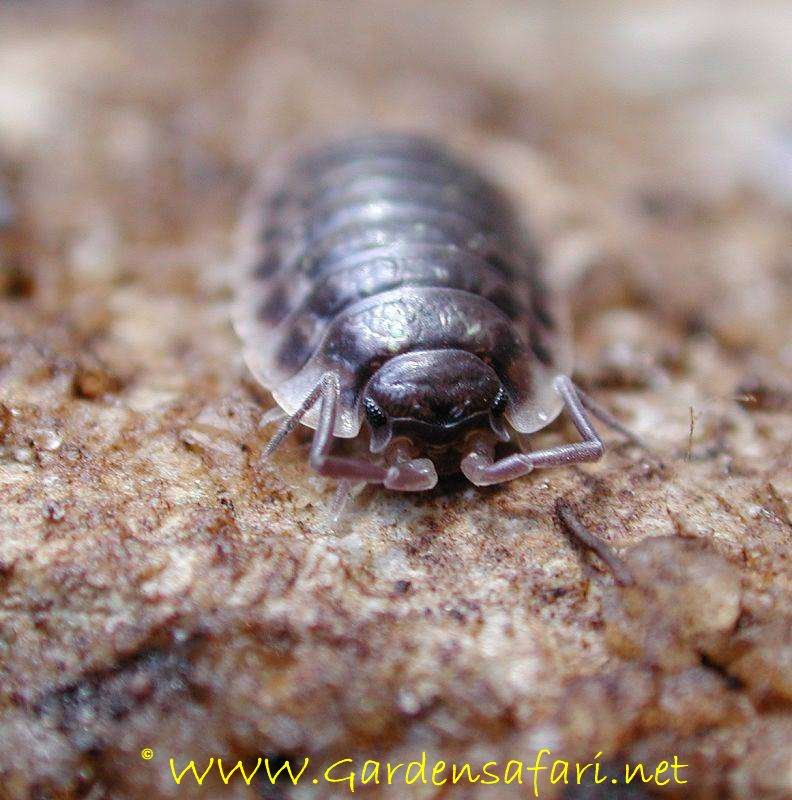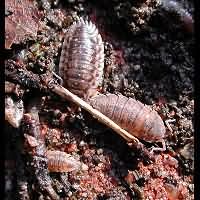[All pictures of garden wildlife on this page are thumbnails. Click on any thumbnail for a large format to be displayed.]
Common Shiny Woodlouse (Oniscus asellus)
The Common Shiny Woodlouse is the most common species in Western-Europe. However it does not inhabit the Mediterranean. The animal is grey usually with some lighter spots, expecially on the second half of the body. The young are usually rougher. The animal glistens a bit. Some animals though are strikingly coloured. Especially purple blueish animals are regularly seen. These are sick. They carry the Irido-virus. Three weeks after the infection they turn blue and one week later they die. Of all common woodlice the Common Shiny Woodlouse is the biggest, reaching some 16 millimeters in length. It eats decaying plants, but rarely chews on fresh plants. The damage it does is so limited that you dont have to do anything about it. Like all woodlice it is a nocturnal animal. The easiest way to spot this animal is to look in dark and moist places. Just turn around stones, logs or even flower pots. It is also often encountered in moist cellars.
The Common Shiny Woodlouse is very similar to the Common Rough Woodlouse. The latter is more grey, usually without lighter spots, rough and not shiny and slightly smaller. Both animals live in the same way and may be seen at the same spots, often in mixed groups.
In the bottom picture both species together. The top animal is a Common Shiny Woodlouse. It is shiny and has few and little bumps. The two bottom animals are rather wierd coloured Common Rough Woodlice. They are not shiny and have a rather rough appearence.
The Common Shiny Woodlouse is very similar to the Common Rough Woodlouse. The latter is more grey, usually without lighter spots, rough and not shiny and slightly smaller. Both animals live in the same way and may be seen at the same spots, often in mixed groups.
In the bottom picture both species together. The top animal is a Common Shiny Woodlouse. It is shiny and has few and little bumps. The two bottom animals are rather wierd coloured Common Rough Woodlice. They are not shiny and have a rather rough appearence.

© Copyright 1998-2024 gardensafari.net (Hania Berdys)

 English / engels
English / engels  Dutch / nederlands
Dutch / nederlands




